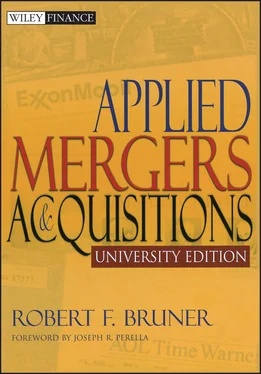EXHIBIT 2.2 Excerpts from AIMR Code of Ethics and AIMR Standards of Professional Conduct
AIMR Code of Ethics
Act with integrity, competence, dignity, and in an ethical manner….
Practice and encourage others to practice in a professional and ethical manner….
Strive to maintain and improve our competence and the competence of others in the profession.
Use reasonable care and exercise independent professional judgment.
AIMR Standards of Professional Conduct (in part)
… Act for the benefit of our [investing] clients and place their interests before our own.
Use reasonable care and judgment to achieve and maintain independence and objectivity.
… Have a reasonable and adequate basis, supported by appropriate research and investigation, in making investment recommendations or taking investment actions.
Avoid any material misrepresentation in any research report or investment recommendation.
Disclose to clients and prospects all matters that reasonably could be expected to impair our ability to make unbiased and objective recommendations.
Deal fairly and objectively with all clients and prospects.
Not engage in any professional conduct involving dishonesty, fraud, deceit, or misrepresentation.
Exercise reasonable supervision to prevent any violation of the Code and Standards by those subject to our supervision and authority.
Source: Thomas A. Bowman, “An Open Letter to Leaders of the Investment Community,” Wall Street Journal , January 23, 2003, page C3.
Codes of ethics are easily reduced to a mentality of compliance (e.g., observance of checklists and other external reminders that can be monitored). The flaw with the mentality of compliance is that it is fundamentally mindless. Ethical issues are subtle and demand mindful engagement to be detected and resolved.
Talk about Ethics within Your Team and Firm
The sound approach builds upon a mentality of commitment or mindfulness. One’s objective as a team or enterprise leader should be to create a culture of integrity that promotes reflection and discussion. Many firms introduce such a culture with a program of seminars and training in ethical reasoning. Companies such as Sun Microsystems, Boeing, United Technologies, and Johnson & Johnson have launched comprehensive ethics training programs for executives. A reporter noted, “Most corporations have long had codes of conduct and have publicized them in employee handbooks and elsewhere. But now, [one expert] said, they are ‘looking to create ethical athletes out of their managers’ who are capable of navigating the gray areas.” 18 Part of leadership should be to make ethical issues a legitimate point of discussion in both informal and formal ways within the working group.
A leader can stimulate reflection through informal discussion of ethical developments (e.g., indictments, convictions, civil lawsuits) in the industry or profession or of ethical issues that the team may be facing. This kind of discussion (without preaching) signals that it is on the leader’s mind and is a legitimate focus of discussion. One executive regularly raises issues such as these informally over lunch and morning coffee. Leaders believe ethical matters are important enough to be the focus of team discussions.
Find and Reflect on Your Dilemmas
The showstopper for many business professionals is that ethical dilemmas are not readily given to structured analysis, as one values a firm or balances the books. Nevertheless, one can harness the questions raised in the field of ethics to lend some rigor to one’s reflections. Laura Nash (1981) abstracted a list of 12 questions on which the thoughtful practitioner might reflect in grappling with an ethical dilemma:
1 Have I defined the problem correctly and accurately?
2 If I stood on the other side of the problem, how would I define it?
3 What are the origins of this dilemma?
4 To whom and what am I loyal, as a person and as a member of a firm?
5 What is my intention in making this decision?
6 How do the likely results compare with my intention?
7 Can my decision injure anyone? How?
8 Can I engage the affected parties in my decision before I decide or take action?
9 Am I confident that my decision will be valid over the long-term future?
10 If my boss, the CEO, the directors, my family, or community learned about this decision, would I have misgivings?
11 What signals (or symbols) might my decision convey, if my decision were understood correctly? If misunderstood?
12 Are there exceptions to my position, “special circumstances” under which I might make an alternative decision?
In addition to analysis, you can bring moral imagination to the reflection on ethical dilemmas. Mark Johnson defines moral imagination as “an ability to imaginatively discern various possibilities for acting within a given situation and to envision the potential help and harm that are likely to result from a given action.” 19 Patricia Werhane lists four qualities necessary for moral imagination: “(1) a disengagement from an individual’s role, particular situation, or context; (2) an awareness of the kind of scheme one has adopted or that is operating in a particular kind of context; (3) a creative vision of new possibilities—fresh ways to frame experiences and new solutions to present dilemmas; and (4) an evaluation of the old context, scope or range of conceptual schemes at work, and new possibilities.” 20
This may be the toughest step of all. The field of ethics can lend structure to one’s thinking but has less to say about the action to be taken. Confronting a problem of ethics within a team or organization, one can consider a hierarchy of responses, from questioning and coaching to “whistle blowing” (either to an internal ombudsperson or if necessary to an outside source) and, possibly, to exit from the organization.
MINI-CASE: GREENMAIL PAYMENT BY WALT DISNEY PRODUCTIONS, 1984
Some of the most interesting reflections on ethics in business emerge in dilemmas between two “bads” (i.e., asking which is less bad) or two “goods” (i.e., asking which is better). Choosing one ultimately impinges on another good, or perhaps commits a bad in the process. Consider the case of the attempted takeover of Walt Disney Productions by the corporate raider Saul Steinberg in June 1984. Disney’s CEO, Ronald Miller, faced the dilemma of whether to fight the takeover or pay “greenmail” to make Steinberg go away. The case discussion here highlights the kind of ethical considerations that Laura Nash’s framework can address.
Assessment of the Problem
Greenmail is the payment of a premium share price by a takeover target to a hostile buyer for the buyer’s accumulated shares in the target. Paying greenmail could be considered unethical for four reasons. First, it is a discriminatory payment; not all public shareholders enjoy the right to sell their shares to the company at the price paid to the greenmailer. It violates an implied duty of fairness to all shareholders. Second, it is viewed as the triumph of certain agents’ self-interest: senior managers rarely welcome the consequences of a hostile takeover and, so it is argued, sacrifice shareholders’ wealth by paying greenmail to preserve their jobs. Third, it is believed to effect significant transfers of wealth from the remaining public shareholders to a more powerful raider. Research finds that the rest of the shareholders are poorer after greenmail; thus, the consequences are bad. Fourth, greenmail payments (like blackmail) are actions not freely conceived and may set the pattern for further intimidation; expediency is a bad precedent. From a virtues perspective, greenmail is like a flashing sign that says, “We are weak.” Against such a list, no conditions appear to exist under which management would be justified in paying greenmail. Do the considerations in the case of Walt Disney’s greenmailing by Saul Steinberg warrant such a conclusion?
Читать дальше












